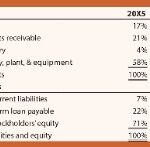Content

The calculation for Gross Margin is simple in that it’s simply Revenues – COGS, and it is often expressed as a percentage (i.e. 70% Gross Margin). This is an important metric that many investors and business leaders focus https://kelleysbookkeeping.com/ on because it’s one of the principal measures of a company’s profitability. The articles and research support materials available on this site are educational and are not intended to be investment or tax advice.
Current period net income as well as net inventory value at the end of the period is reduced for the decline in value. Under this method, particular items are identified, and costs are tracked with respect to each item. This method cannot be used where the goods or items are indistinguishable or fungible. To do this, a business needs to figure out the value of its inventory at the beginning and end of every tax year. Its end-of-year value is subtracted from its beginning of year value to find cost of goods sold. Very briefly, there are four main valuation methods for inventory and cost of goods sold.
What is the difference between COGS and SG&A?
Presentation, the goods sold is subtracted from net revenues to arrive at the gross margin of a business. The cost of goods sold can also be impacted by the type of costing methodology used to derive the cost of ending inventory. For example, under the first, first out method, known as FIFO, the first unit added to inventory is assumed to be the first one used. Thus, in an inflationary environment where prices are increasing, this tends to result in lower-cost goods being charged to the cost of goods sold. The reverse approach is the last in, first out method, known as LIFO, where the last unit added to inventory is assumed to be the first one used. Thus, in an inflationary environment where prices are increasing, this tends to result in higher-cost goods being charged to the cost of goods sold.
How will you define the cost of goods sold COGS?
The cost of goods sold (COGS) is the sum of all direct costs associated with making a product. It appears on an income statement and typically includes money mainly spent on raw materials and labour. It does not include costs associated with marketing, sales or distribution.
These articles and related content is the property of The Sage Group plc or its contractors or its licensors (“Sage”). Please do not copy, reproduce, modify, distribute or disburse without express consent from Sage. These articles and related content is provided as a general guidance for informational purposes only.
FIFO
To calculate the overall annual spendings, you will always have to start from the beginning inventory. There are chances that some new items were introduced in the beginning inventory, so a new inventory that is purchased is added to the old one. Now, as we are to calculate how much of the inventory Cost Of Goods Sold Cogs Definition was sold, subtract the ending inventory. A business person can earn profit only when he knows his exact expenses and incomes by selling his/her goods. When you know what makes up your business costs, you can take steps to keep them under control and work toward your growth and profitability goals.
- As we’ve seen, COGS are costs or expenses that are closely tied to your revenue, margins, and net income.
- As inventory is a valuable asset, till the time the product or the goods remain a part of that inventory, the amount of that product remains in the asset account.
- The cost of goods sold calculation depends on the inventory costing method practiced by the accounting department of a company.
- It is equal to the previous accounting period’s closing stock, valued in accordance with appropriate accounting standards based on the nature of the business.
- The COGS is a vital metric that is displayed on your financial statements as it is the only figure that gets subtracted from the business revenue to get its gross profit.